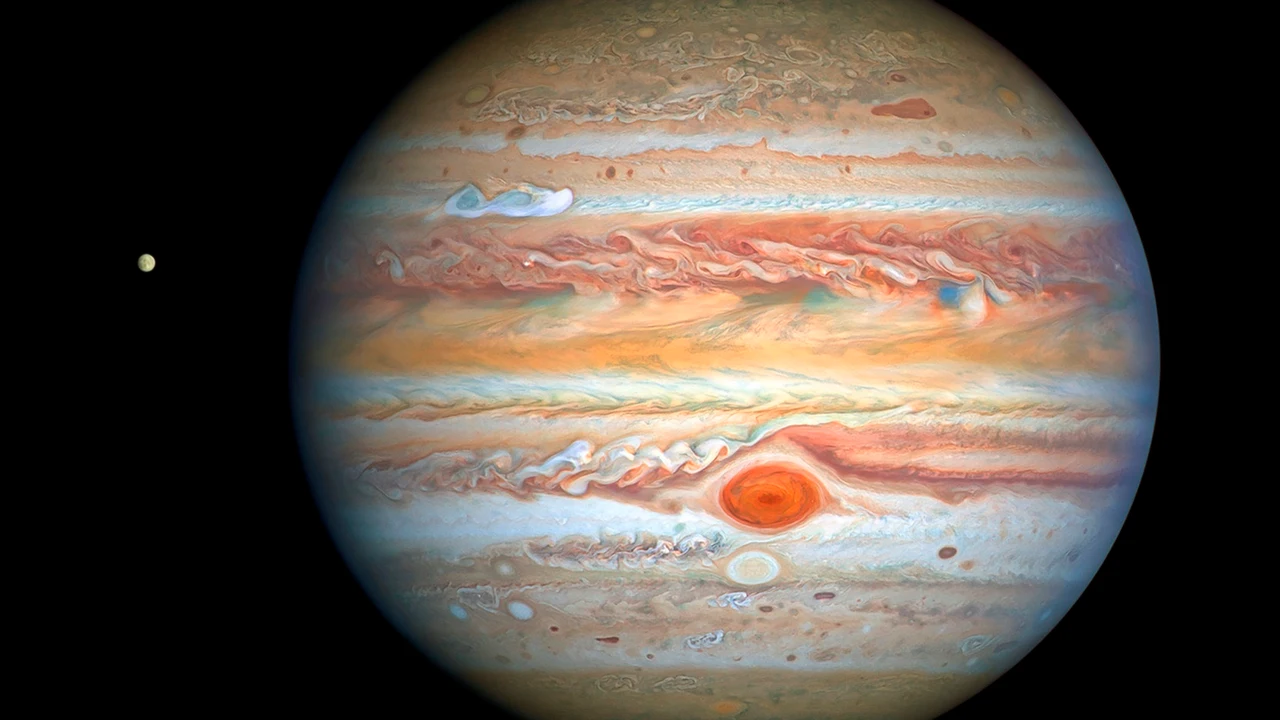Astronomers have presented a surprising new discovery of Jupiter’s nearly identical twin that is orbits a star at a colossal distance of 17,000 light years from Earth. The exoplanet, K2-2016-BLG-0005Lb, is nearly identical to Jupiter in terms of mass and distance from its sun and was discovered using data obtained in 2016 by NASA’s Kepler Space Telescope.
The exoplanetary system is twice as distant as ever seen by Kepler, which found more than 2,700 confirmed planets before ceasing operations in 2018. The system was discovered using gravitational microlensing, predictions from Einstein’s Theory of Relativity, and it is the first planet discovered from space in this way.
The study has been submitted to the Monthly Notices of the Royal Astronomical Society and is available as a preprint on ArXiv.org. PhD student David Specht, of the Jodrell Bank Center for Astrophysics at the University of Manchester is the lead author of the new study. To find exoplanets using the micro-lens effect, the team search for Kepler data collected between April and July 2016, while regularly monitoring the millions of stars near the galactic center. The goal is to look for evidence of an exoplanet and its parent star by bending and temporarily magnifying the background starlight as it passes through the line of sight.
“To see the effect almost perfect alignment is required between the foreground planetary system and the background star,” said Dr Eamonn Kerins, Principal Investigator at the UK Science and Technology Facility Council (STFC), which funded the work. Dr Kerins added in a statement: “It is likely that the background star is affected in this way by a planet is tens to hundreds of millions to one. But there are hundreds of millions of stars heading towards the center of our galaxy. So Kepler just sat and watched them for three months.”
The difference in viewpoint between Kepler and an observer on Earth allows us to triangulate where the planetary system is along our line of sight.”
Following the development of specialized analytical methods, candidate signals were finally discovered last year using a new search algorithm presented in a study led by Dr. Iain McDonald, then an STFC-funded postdoctoral researcher, working with Dr Kerins. Among the five new microlensing signal candidates found in that analysis, one shows a clear indication of an abnormality consistent with the existence of orbiting exoplanets.
Five international land surveys also looked at the same sky area at the same time as Kepler. At a distance of about 135 million kilometers from EarthKepler spotted the anomaly slightly earlier and longer than the team observing from Earth. The new study comprehensively models the combined data set and demonstrates conclusively that the signal is caused by a distant exoplanet.
“The difference in viewing angles between Kepler and observers on Earth allowed us to triangulate where the planetary system is along our line of sight,” said Dr. Kerins. “Kepler is also able to observe the planet’s diurnal cycles smoothly, which allowed us to accurately determine the mass of the exoplanet and its orbital distance from its parent star. It is essentially a Jupiter twin that is identical in mass and position to the Sun, which is about 60% the mass of our own Sun.”

“Entrepreneur. Internet fanatic. Certified zombie scholar. Friendly troublemaker. Bacon expert.”







